Planning a getaway to the north of Spain and wondering about the best things to do in Cantabria? Get ready to discover one of the most beautiful and diverse regions in the country, where the Cantabrian Sea meets endless mountains, charming villages, prehistoric caves, and a gastronomy that wins everyone’s heart.
From the elegant bay of Santander to the lush Pasiego Valleys, passing through wild beaches, scenic viewpoints, natural parks, and historical towns, Cantabria is the perfect destination to enjoy at any time of the year.
In this guide, we’ll show you the best things to do in Cantabria, with 20 unforgettable plans that blend nature, culture, and local flavor. Then you’ll understand why so many travelers say that Cantabria is truly infinite.
Ready to explore Cantabria your way?
Rent a car and explore Cantabria’s villages, beaches, and mountains at your own pace.
Book now and enjoy the freedom to travel without limits.
1. Santander, the Bright Gem of Cantabria’s Coast
Santander still preserves the elegance of having been the summer residence of King Alfonso XIII, a legacy that can still be felt in its graceful old town and along the Península de la Magdalena, crowned by the impressive Royal Palace. After the great fire of 1941, which destroyed much of the city center, Santander was reborn with the same refined maritime charm that defines it today.
Although locals say that Santander is a “pindia” city —meaning hilly—, it’s a delight to stroll from the bay to the Cabo Mayor Lighthouse, enjoying breathtaking views over the Mataleñas cliffs. And, of course, no visit would be complete without stopping to savor some crispy “rabas” (fried squid rings) or fresh fish in the city’s iconic Barrio Pesquero.
Also Read: Top 10 Things To Do in Santander Spain: A One-Day Itinerary
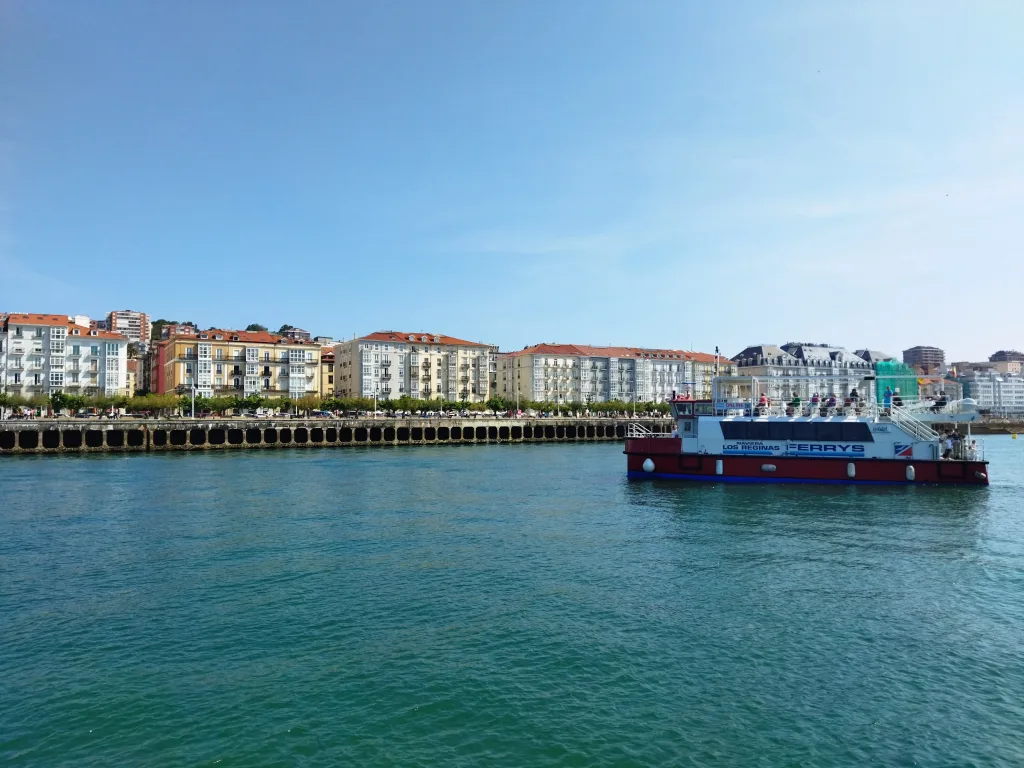
2. Costa Quebrada: A Stunning Cliffside Coastline
From Cabo Mayor Lighthouse, you can continue towards one of the most spectacular coastal areas in northern Spain: the Costa Quebrada Coast in Cantabria. This impressive natural landscape, filled with dramatic cliffs, striking rock formations, and unspoiled coves, offers such breathtaking scenery that it has become one of the most popular places to visit in the region.
Along the route, the Cantabrian Sea crashes powerfully against the cliffs, while on clear days you can even see the majestic Picos de Europa Mountains in the distance. It’s an unforgettable destination for nature lovers, photography enthusiasts, and anyone who enjoys coastal walks surrounded by wild beauty.
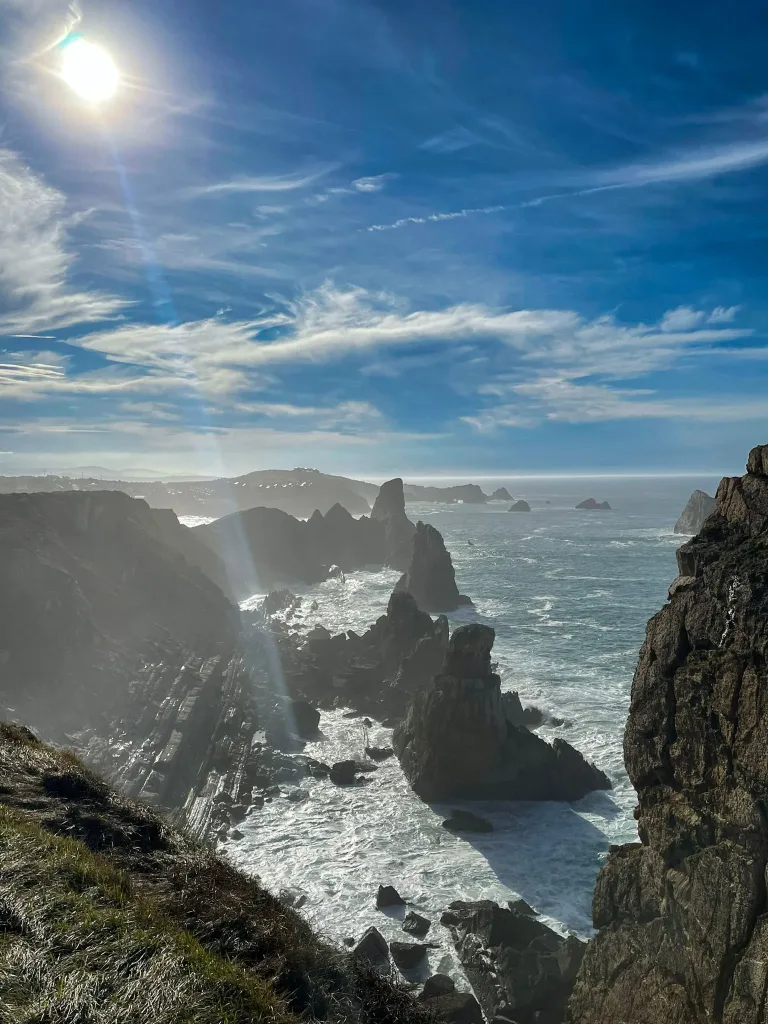
3. The Cabezón de la Sal Sequoia Forest: A Walk Among Giants
One of the most romantic and surprising places in Cantabria is the Cabezón de la Sal Sequoia Forest. They say that hugging these giants fills you with a special kind of energy — and indeed, just stepping into their shade is enough to feel an incredible sense of calm.
The whisper of the wind through the trunks and the scent of damp earth create an atmosphere of peace and connection with nature that’s hard to put into words. This small green sanctuary, located just a few steps from the Cantabrian Highway (A-8), is the perfect stop to disconnect and be surrounded by the magic of the tallest trees in Europe.
Also Read: Bosque de las Secuoyas de Cantabria
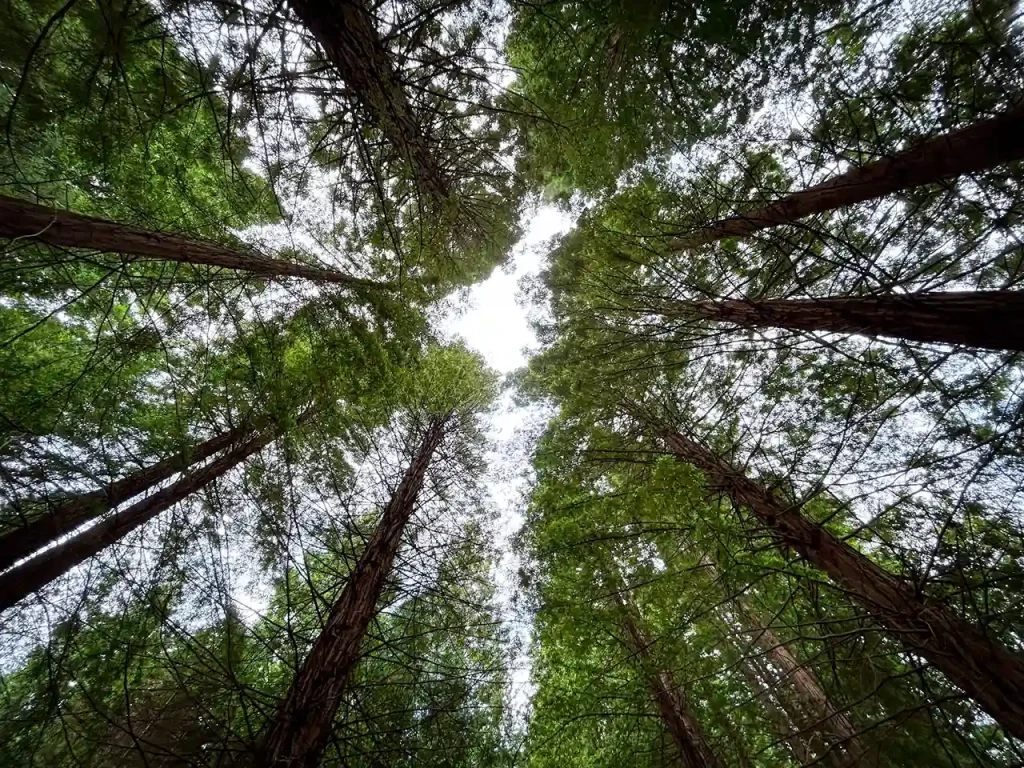
4. Santillana del Mar: Cantabria’s Most Beautiful Medieval Town
Among the best things to do in Cantabria, visiting Santillana del Mar is an absolute must. Despite its name — it’s neither “holy,” nor “flat,” nor “by the sea” — this charming medieval town is considered one of the most beautiful in all of Spain.
Strolling through its cobblestone streets feels like traveling back in time: stone façades, colorful balconies overflowing with flowers, and a calm atmosphere that invites you to slow down and enjoy every corner. The Collegiate Church of Santa Juliana, a jewel of Cantabrian Romanesque art, is one of the top attractions, as is tasting a glass of fresh milk with a sobao pasiego, a traditional sponge cake from the region.
For gluten-free travelers, Santillana del Mar is also home to Las Quintas, one of the best artisan gluten-free bakeries in Spain, where everything is crafted with care and dedication. Their small shop is located right at the beginning of the main walk through the town.
Don’t forget to bring comfortable shoes and a light jacket for the evening breeze — Santillana del Mar is a true gem that perfectly captures the essence of Cantabria and deserves a spot on any list of the best things to do in Cantabria.
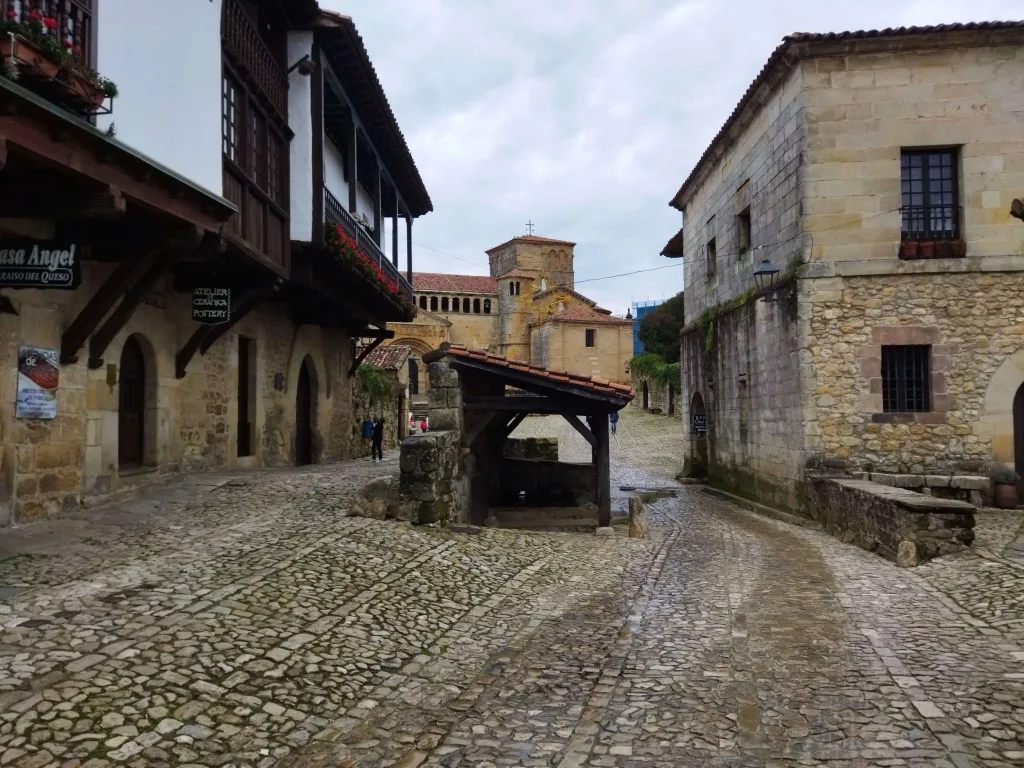
5. Altamira Cave: The Jewel of Prehistoric Art in Cantabria
Known as the Sistine Chapel of cave art, the Altamira Cave is one of the great treasures and best things to do in Cantabria. The original cave had to be closed to the public to preserve its valuable paintings, but just three kilometers from Santillana del Mar, visitors can explore an exact replica that captures all the magic of the original site.
As a child, I was lucky enough to see the authentic cave, and I was mesmerized by the ancient paintings of bison, horses, and handprints that seemed to come alive under the soft light. Today, the National Museum and Research Center of Altamira offers a stunning recreation that takes visitors back to the origins of art and invites them to imagine what life was like for our prehistoric ancestors.
A truly unmissable visit that helps explain why Altamira remains, centuries later, a universal symbol of human creativity and genius.
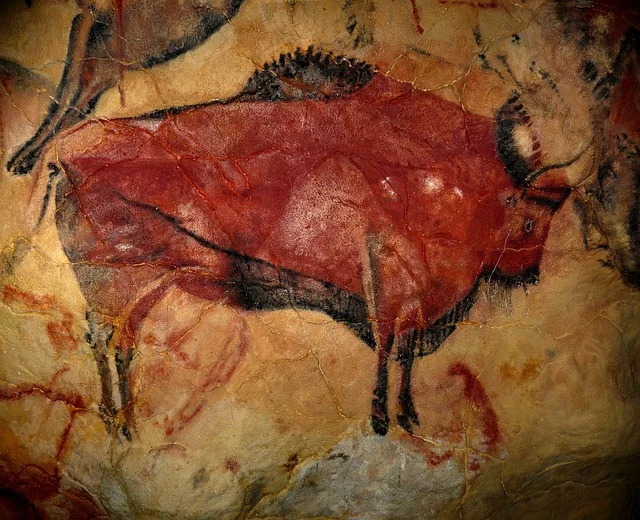
6. Comillas: The Modernist Jewel of the Cantabrian Coast
Among the best things to do in Cantabria, visiting Comillas is an experience that perfectly combines art, history, and the sea. Known as the “Town of the Archbishops”, this elegant coastal village was home to many prelates and still preserves a distinctly noble and aristocratic atmosphere.
This modernist town is filled with architectural treasures such as the Sobrellano Palace and the famous Capricho de Gaudí, one of the few works by the Catalan architect located outside Catalonia. Facing this monumental complex stands the Pontifical University of Comillas, whose striking silhouette dominates the skyline and adds even more charm to the town.
As if that weren’t enough, Comillas also boasts a beautiful golden-sand beach, set beside the fishing harbor and within the Oyambre Natural Park, a protected area of great ecological value.
Also Read: Qué ver en Comillas: 10 imprescindibles
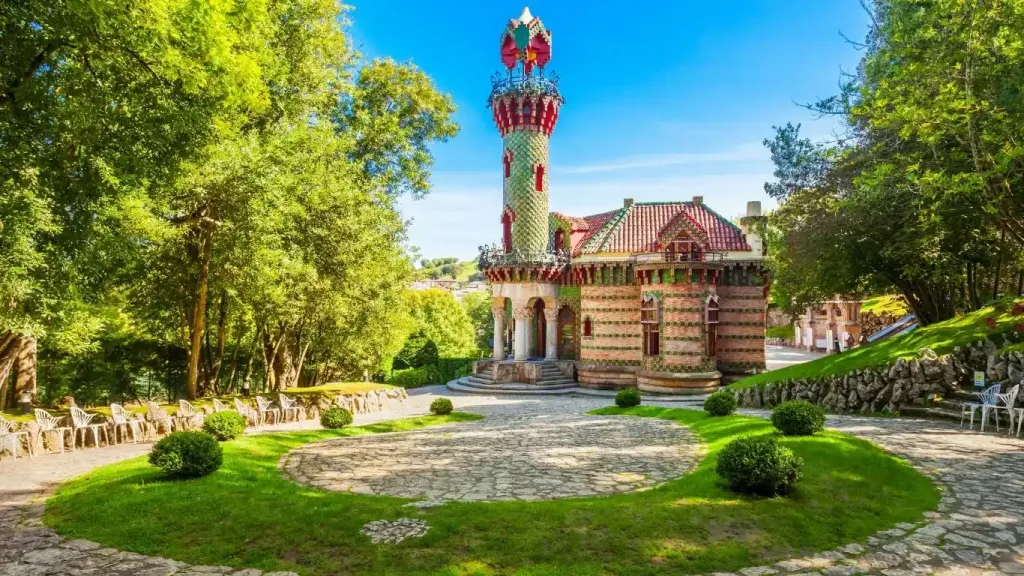
7. El Soplao Cave: The Underground Treasure of Cantabria
Among the most fascinating places to visit in Cantabria, El Soplao Cave holds a truly special place. This unique underground wonder dazzles visitors with its stalactites, stalagmites, columns, and calcite crystals, which over the centuries have formed shapes as whimsical as they are mesmerizing — just let your imagination run wild as you admire them.
Beyond its spectacular geological beauty, the cave and its surroundings preserve an important legacy of industrial mining archaeology, with more than 20 kilometers of tunnels that bear witness to the area’s rich mining past.
The classic guided tour offers an easy and informative visit, but more adventurous travelers can choose from several speleology routes, adapted to different levels of difficulty.
A practical tip: wear comfortable shoes and bring a warm jacket, as the ground can be damp and the temperature quite cool. Thanks to this unique microclimate, El Soplao Cave has managed to preserve its natural splendor intact through the years.
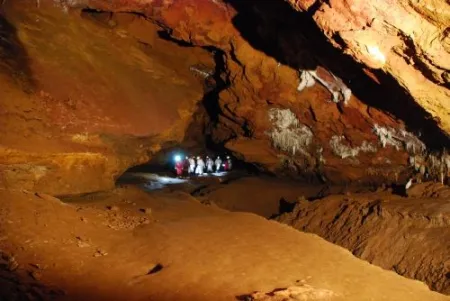
8. Faro del Caballo Lighthouse: Cantabria’s Most Famous Stairs
In Santoña lies one of the most breathtaking spots on the Cantabrian coast — the Faro del Caballo Lighthouse. Nestled in the Monte Buciero area, it offers dramatic scenery and hiking trails of varying difficulty, all rewarded with spectacular views over the Cantabrian Sea.
Getting to the lighthouse is an adventure in itself: you’ll need to descend more than 700 steps, but the effort quickly fades once this magical spot appears before your eyes, suspended between cliffs and the open sea. For those who prefer to enjoy the scenery without the climb, there are also boat trips across the bay and kayak excursions that offer equally stunning perspectives.
And to top it all off, don’t miss tasting Santoña’s famous anchovies by visiting one of its traditional artisan canning factories. There, you’ll discover the meticulous work of the sobadoras — the skilled women who clean each anchovy by hand, turning this humble fish into one of the finest delicacies of northern Spain.
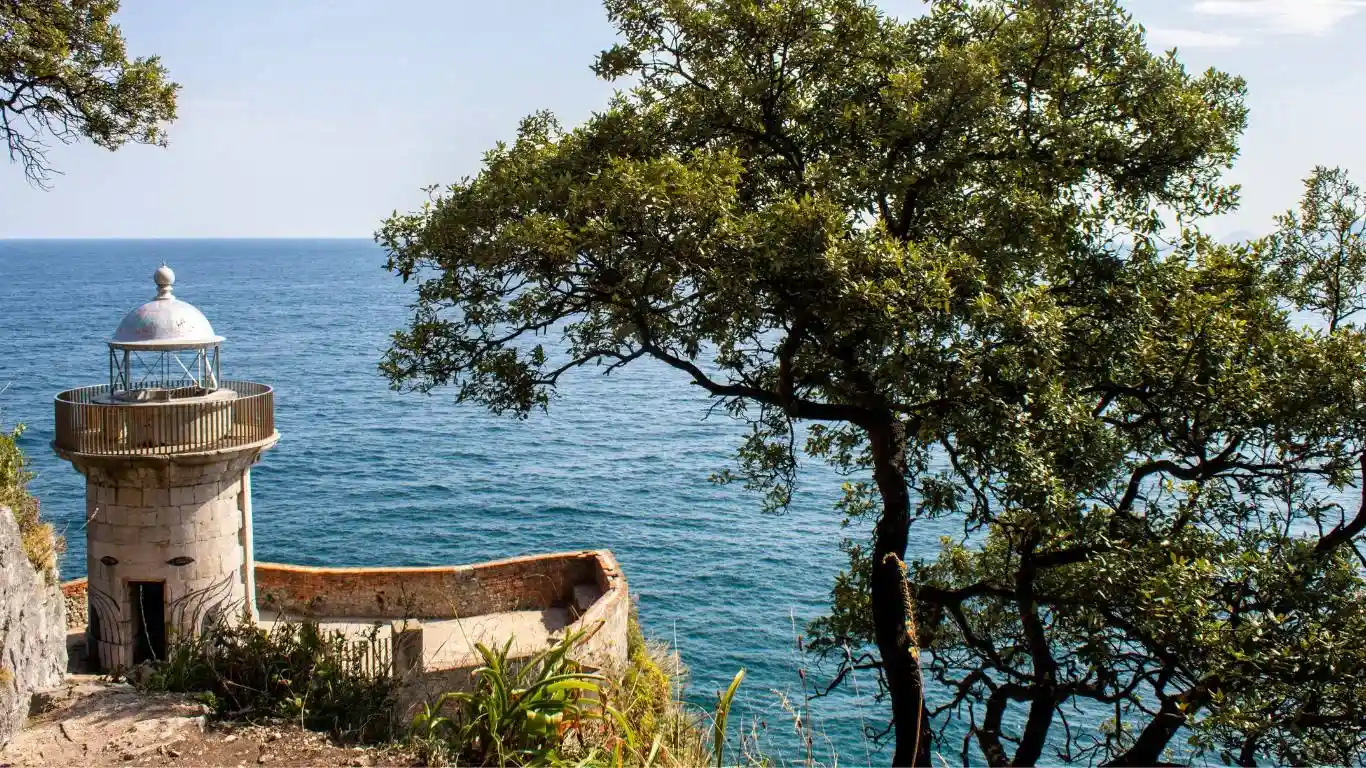
9. Castro Urdiales: The Most Elegant Seaside Town in Cantabria
Not far from Santoña, Castro Urdiales rises as another jewel of the Cantabrian coast, a Historic-Artistic Site well worth admiring. Its elegant seafaring silhouette perfectly blends the charm of a traditional fishing harbor with a rich monumental heritage.
Among its treasures are the Church of Santa María de la Asunción, considered the finest example of Gothic architecture in Cantabria, the castle-lighthouse, the medieval bridge, and the Hermitage of Santa Ana, perched dramatically above the cliffs overlooking the sea.
Sunset in Castro Urdiales is one of those unforgettable scenes that stay with you long after you leave — the sun dipping behind the harbor, boats gently rocking on the water, and the horizon bathed in golden light. It’s the perfect ending before continuing inland, where new landscapes, stories, and flavors of that endless and enchanting Cantabria await.

10. Potes: The Gateway to the Picos de Europa
Potes is the heart of the Liébana Valley, a mountain village full of soul and the meeting point between nature, history, and tradition. But even before you arrive, the journey itself is a gift: the road that winds through the Desfiladero de la Hermida Gorge twists between towering rock walls and breathtaking mountain scenery.
Along the way, you’ll discover the authentic flavors of Bejes cheeses, the charming Lebaniego stone houses of Mogrovejo, and, of course, the Monastery of Santo Toribio de Liébana — a place of pilgrimage and deep tranquility. Even if you’re not religious, the views from its lookouts are simply spectacular, helping you understand why this land captures the heart of everyone who visits.
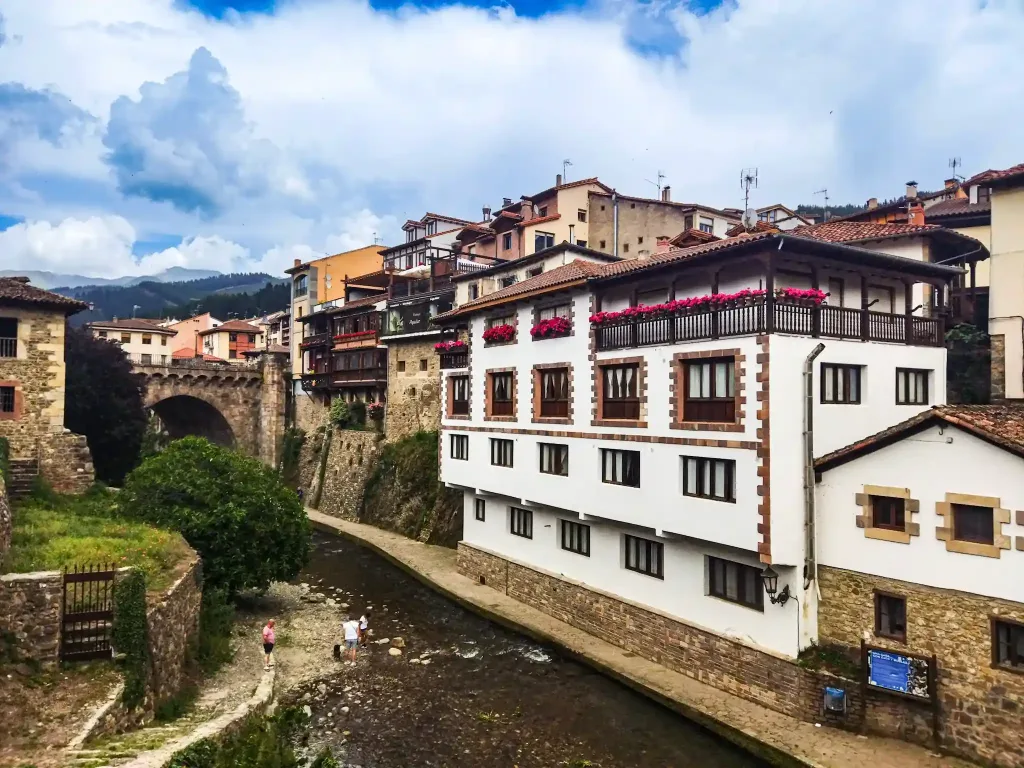
11. Fuente Dé Cable Car: A Window into the Heart of the Picos de Europa
Are you ready for this adventure? From the Mirador del Cable viewpoint, perched at 1,823 meters above sea level, you’ll feel as if you could almost touch the sky. In front of you stretches the majestic panorama of the Picos de Europa, a natural spectacle offering some of the most breathtaking views in Cantabria.
That said, it’s not a place for those afraid of heights — excitement is guaranteed! And don’t forget: book your tickets in advance, especially during the high season.
You can also hike up on foot if you’re up for the challenge, though the trail requires good physical condition. Many visitors choose to walk back down, following a stunning 14-kilometer path through mountains and meadows that’s sure to stay with you long after the journey ends.
And after the adventure, there’s no better reward than a hearty cocido lebaniego — rich, comforting, and, as locals like to say, “capable of bringing the dead back to life.”
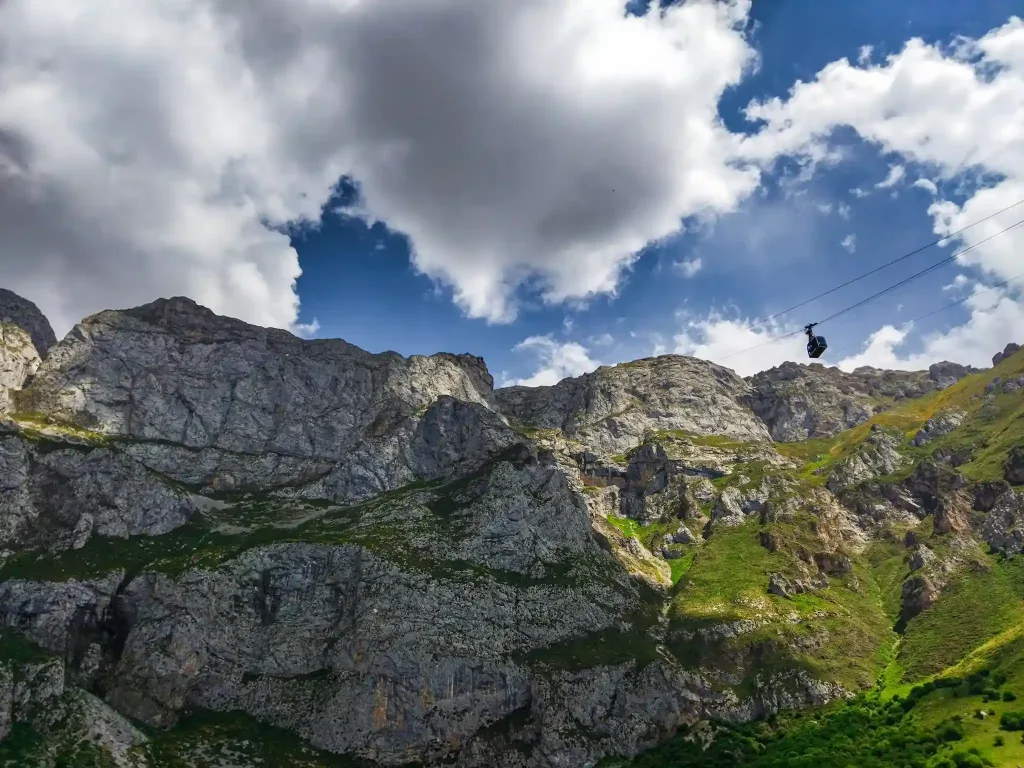
12. Valles Pasiegos: The Green Heart of Cantabria
If you’ve managed to resist Cantabria’s culinary temptations so far, in the Valles Pasiegos that will be absolutely impossible. The sweet aroma of sobaos and quesadas fills the air, following you wherever you go — as if it floated between the green mountains and the traditional berets of the pasiegos, the valley’s proud inhabitants.
But this is not only a place to feed the body — it also nourishes the soul. Endless meadows, stone manor houses, crystal-clear rivers, and a deep-rooted cattle-raising tradition that still thrives in every corner define this idyllic region. From Puente Viesgo to Vega de Pas, passing through Selaya and Villafufre, the Valles Pasiegos form a mosaic of charming villages, peaceful landscapes, and flavors that capture the very essence of authentic Cantabria.
Also Read: Ruta circular en coche por los Valles Pasiegos

13. Liérganes: The Town of the Fish-Man Legend
Among the best things to do in Cantabria, a visit to Liérganes is a true must. Nestled in the heart of the Valles Pasiegos and just a short drive from Santander, this charming town captivates visitors with its flower-filled wooden balconies, cobblestone streets, and peaceful atmosphere, where time seems to stand still.
Beyond its beauty, Liérganes is famous for one of the most fascinating legends in Cantabrian mythology — the Fish-Man Legend. According to the tale, in the 17th century, a young man from the village jumped into the river and vanished. Years later, fishermen from Cádiz caught a strange creature with a human body and a fish’s tail, who could only utter a single word: “Liérganes.”
A town of history, tradition, and a touch of magic, Liérganes is also known for its warm hospitality and delicious churros with hot chocolate — though, for now, we haven’t found a gluten-free version yet. We’ll just have to come back and keep searching!

14. Cabárceno Nature Park: Cantabria’s Most Impressive Natural Park
Just 20 minutes from Santander lies a truly unique place — almost like a Cantabrian Noah’s Ark — the Cabárceno Nature Park. What was once an iron mine has been transformed into an extraordinary landscape where animals from five continents live in semi-freedom, surrounded by more than 5,000 species of trees and shrubs.
You can explore the park by car, bus, or cable car, which offers two panoramic routes to admire its vastness and stunning natural surroundings from above. Set aside at least three hours to take it all in slowly, as every corner reveals a new scene — elephants, giraffes, bears, hippos, tigers — making it one of the absolute best things to do in Cantabria.
And if you don’t want to bring your own food, don’t worry: the park has rest areas, cafés, and restaurants, perfect for recharging before continuing your visit.

15. Bárcena Mayor: The Oldest and Most Charming Village in Cantabria
Walking through Bárcena Mayor feels like stepping into a rural fairytale. Its stone houses, wooden balconies, and the gentle sound of the river flowing through the valley create an atmosphere where time seems to stand still. It’s not unusual to come across a local craftsman carving traditional wooden clogs by hand, keeping ancient traditions alive.
Located within the Saja-Besaya Natural Park, the village has preserved the rustic charm of traditional Cantabrian cottages and serves as an ideal starting point for hiking trails through lush forests and mountains. And when hunger strikes, there’s nothing better than sitting down to enjoy a hearty cocido montañés, a rich mountain stew, in one of its cozy local restaurants.
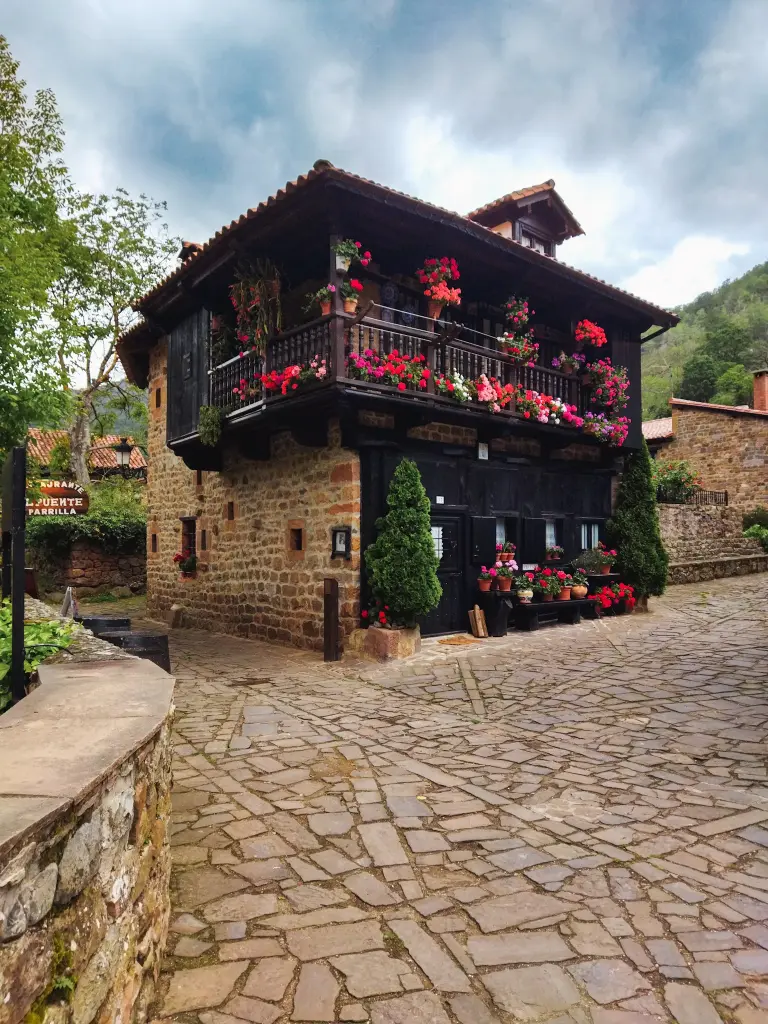
16. Asón River Waterfall: Cantabria’s Most Spectacular Waterfall
The source of the Asón River hides one of Cantabria’s greatest natural treasures — a waterfall over 70 meters high that cascades gracefully down the rocks, forming a stunning horsetail shape.
The walk to the lower part of the waterfall is easy and follows a forest trail, where the gentle murmur of the water accompanies you every step of the way. If you visit in spring, after the mountain snow has melted, you’ll see the waterfall at its most spectacular — though it’s wise to approach with caution, as the mist and spray can easily leave you soaked.
A magical spot, the kind that makes you feel small before the sheer power and beauty of nature.
Also Read: Qué ver en Ramales de la Victoria
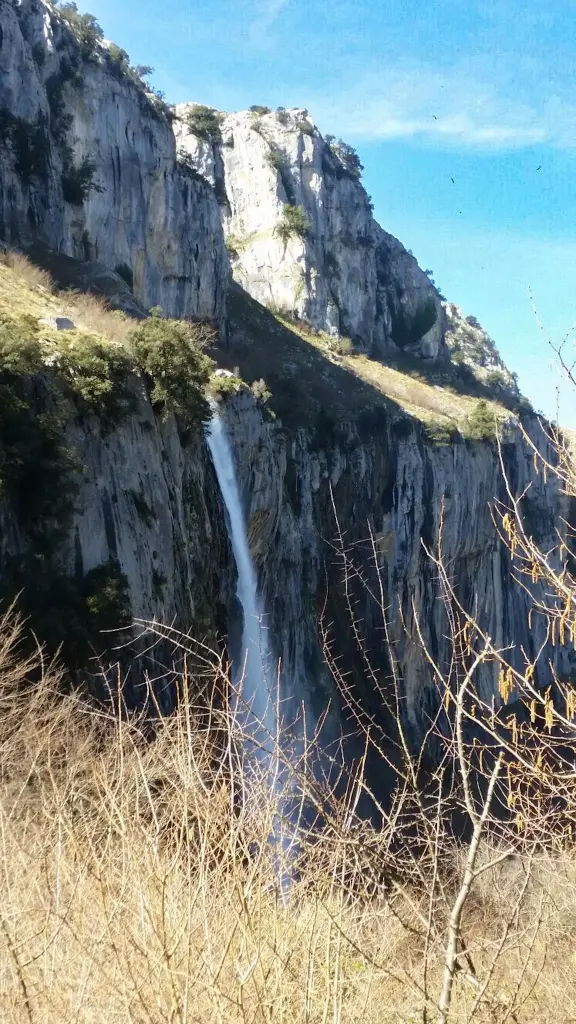
17. Source of the Ebro River: A Peaceful Haven in Fontibre
In Fontibre, not far from Reinosa, springs the Ebro River — the most voluminous river in Spain and one of the country’s most important natural symbols. Reaching the exact spot where the river is born requires a bit of care, as the terrain can be uneven, but the reward is well worth it.
From there begins a charming walk beneath a lush canopy of trees, where the gentle murmur of the water and the cool shade create a magical, almost fairytale-like atmosphere. It’s the perfect place to pause, breathe in the fresh air, and, if the weather allows, enjoy a picnic at the wooden tables scattered among the trees.
A peaceful, life-filled corner where the journey of one of Spain’s great rivers begins.
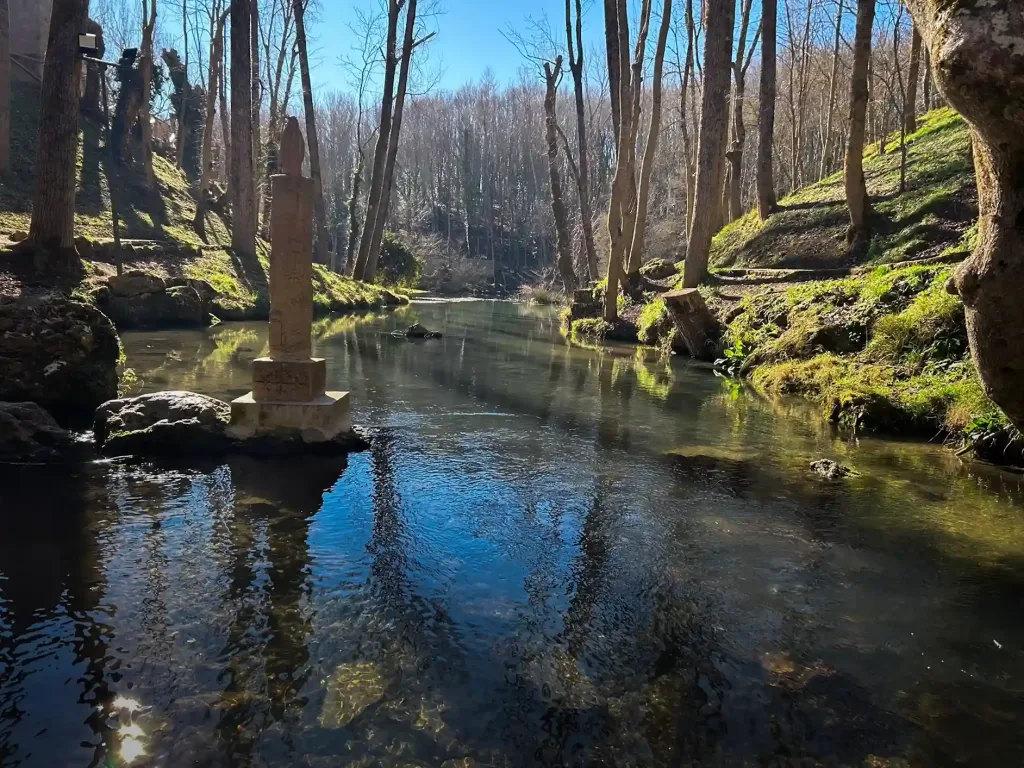
18. Brañavieja, nieve y naturaleza en el corazón de Alto Campoo
Attention, snow lovers! In the heart of Alto Campoo lies Brañavieja, the most important ski resort in Cantabria. With 20 slopes suitable for all levels, it’s perfect both for those seeking speed and adrenaline and for beginners looking to learn at the local ski and snowboard school.
You don’t need to bring your own gear — there are several rental shops offering everything you need for a perfect day on the slopes. And if you’re traveling with family, the little ones (or the less daring!) will have a great time in the sledding areas, building snowmen, or having a friendly snowball fight.
For those who prefer the mountain in its purest form, there’s the spectacular Pico Tres Mares trail, which can be done in winter with snowshoes, offering unforgettable panoramic views.
And to end the day, nothing beats warming up with a bowl of garlic soup or a hearty homemade broth, while gazing at the snowy landscape from a cozy table by the fire.
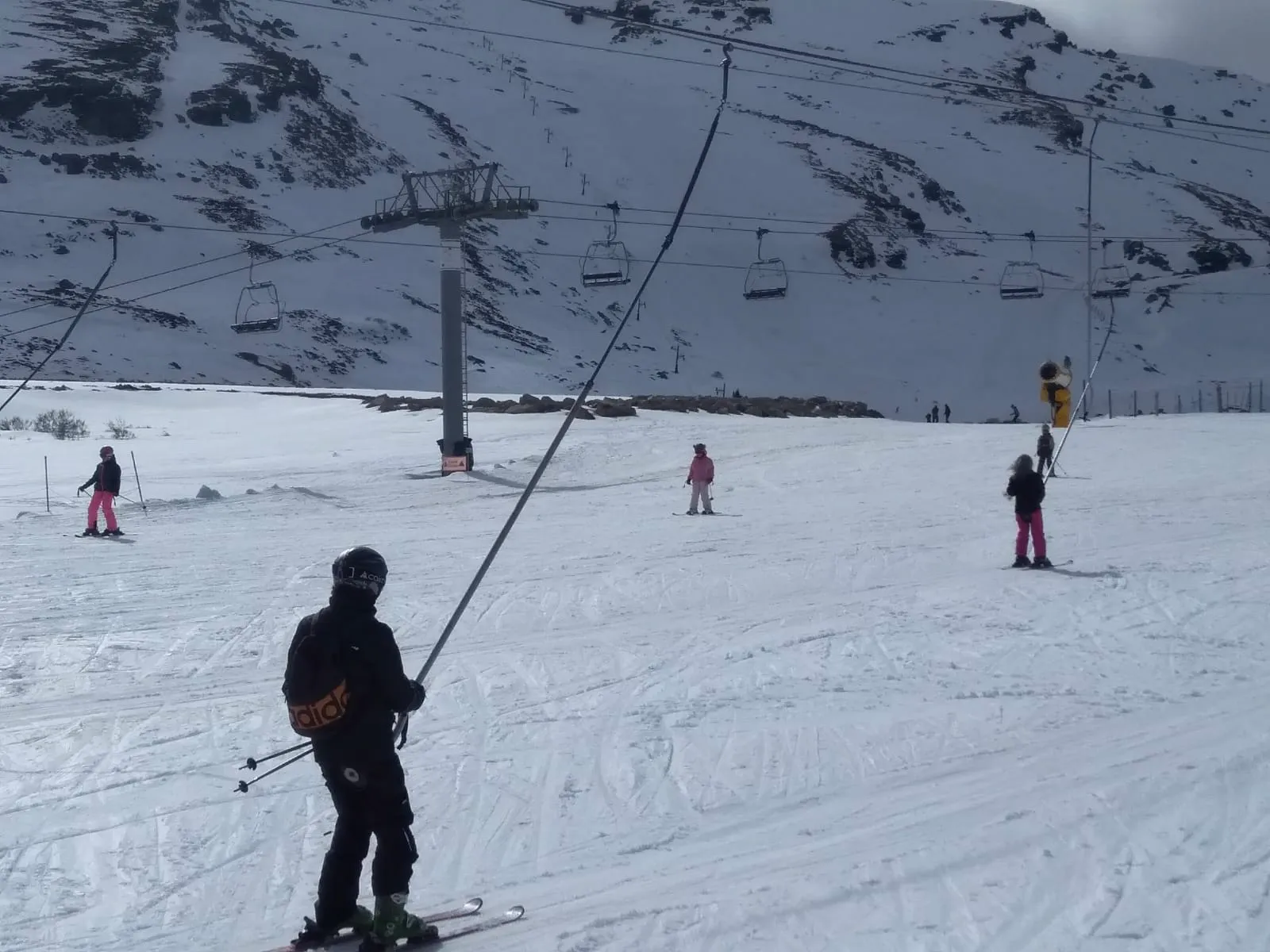
19. Julióbriga: The Roman Legacy in Cantabria
Cantabria is filled with archaeological sites that tell stories spanning centuries. Its rugged mountains and valleys once made invasions difficult, allowing many traces of the past to remain almost perfectly preserved.
Among them stands out the Roman city of Julióbriga, the most important Roman settlement in the region, where visitors can still see the remains of ancient houses, temples, and cobbled streets that evoke its former grandeur. Nearby, in the Besaya Valley, a section of the Roman road has also been preserved — a fascinating reminder of the trade routes that once connected these lands with the rest of Hispania.
A perfect destination for history lovers and for anyone who enjoys discovering the past amid breathtaking mountain landscapes.
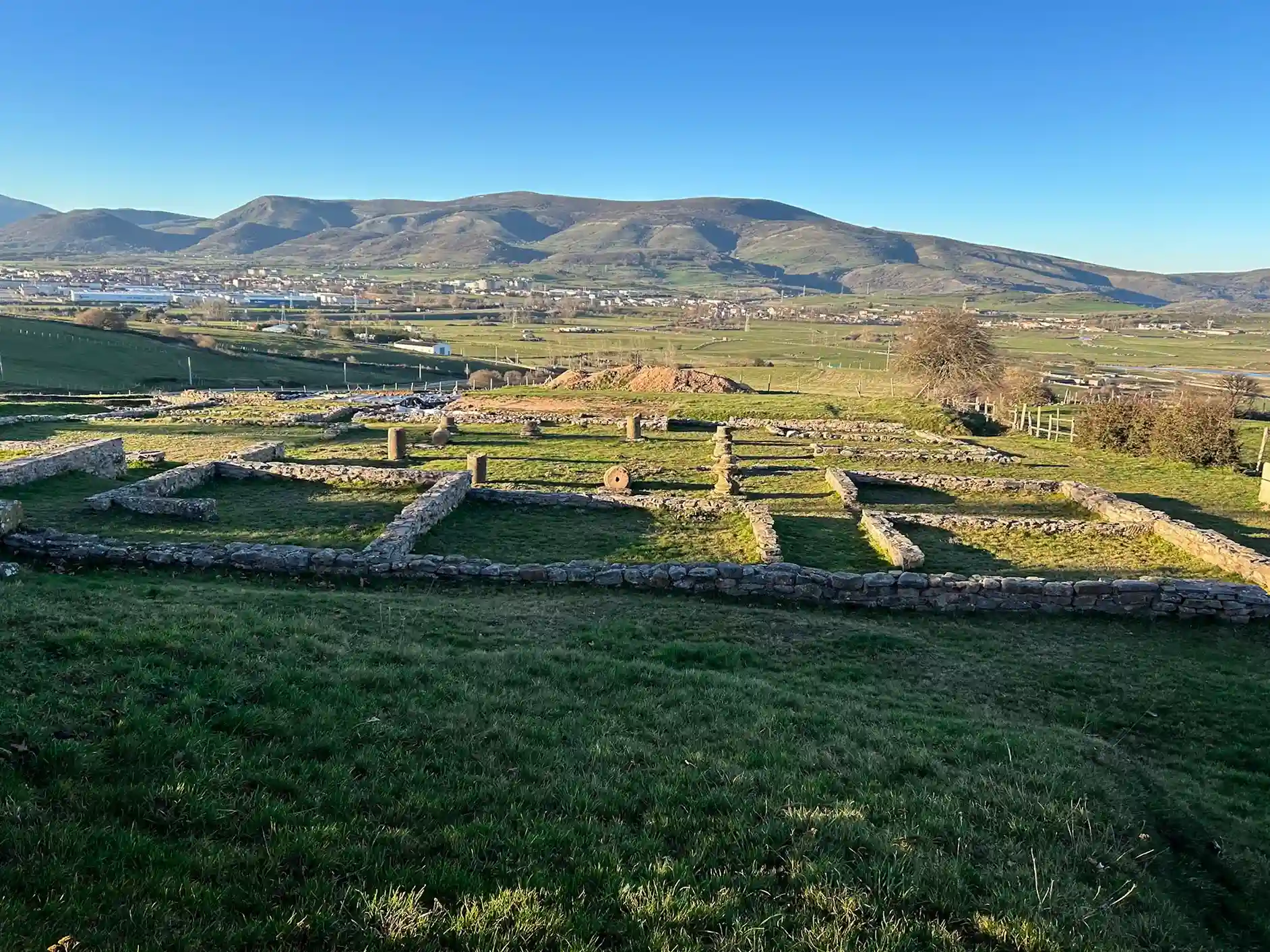
20. Argüeso Castle: Cantabria’s Medieval Fortress
On a hill near Reinosa, the two stone towers of Argüeso Castle rise proudly, standing as one of the most iconic medieval fortresses in Cantabria. Its silhouette is impressive from afar, but it’s once you cross its walls that the true journey back in time begins.
The guided tour allows visitors to fully immerse themselves in the Middle Ages, wandering through stone halls, narrow passages, and noble chambers while actors dressed in period costumes bring the castle’s history to life with remarkable realism.
An experience that blends history, architecture, and emotion — perfect for those who love places where time seems to stand still.

Endless Cantabria: The Journey Continues
The colors of the sunset from here are simply unforgettable — a natural spectacle that captures all the beauty of this land.
We warned you at the beginning: Cantabria is endless, and only when you travel through it do you truly understand why. We’ve left many places out — because, in truth, there aren’t just twenty best things to do in Cantabria — part of the magic lies in letting you discover the rest.
Let yourself be surprised by its mountains, coastline, charming villages, and warm-hearted people.
And when you return, tell us which corner captured your heart — we’d love to hear your story and share it with the Glutendtrotter community.
You may also like these posts:
- The Ultimate 3-Day Cantabria Itinerary: Beaches, Villages and Mountains
- Cantabria en 5 días
- Qué ver en Cantabria en 7 días
- 10 consejos esenciales para viajar a Cantabria
FAQs
A classic itinerary includes Santander (the bay, Magdalena Peninsula, and Cabo Mayor), Costa Quebrada, Comillas, and Santillana del Mar (with Altamira). Inland, visit Potes and the Fuente Dé Cable Car for breathtaking views of the Picos de Europa. If you have extra time: Liérganes, the Pasiego Valleys, or Cabárceno Nature Park.
Spring and autumn offer lush landscapes, fewer crowds, and mild weather. Summer is perfect for beaches and outdoor activities, while winter is ideal for mountain getaways (Alto Campoo) and cultural experiences.
Explore caves and museums (Altamira and its Neocave, El Soplao Cave), stroll through historic towns like Santillana del Mar or Castro Urdiales, enjoy local cuisine (rabas, cocido montañés, sobaos, and quesadas), and take advantage of scenic viewpoints when the clouds clear.
Yes. Highlights include Cabárceno Nature Park, the Fuente Dé Cable Car, calm beaches, and easy hiking routes through the Pasiego Valleys or Costa Quebrada. Many villages have pedestrian areas and family-friendly activities.
More and more restaurants and bakeries offer gluten-free options, especially in popular tourist areas like Santander, Santillana del Mar, Comillas, and Potes. We recommend checking in advance, informing staff, and always verifying cross-contamination protocols.
